Worship of Lord Brahma, Part 13
BY: SUN STAFF
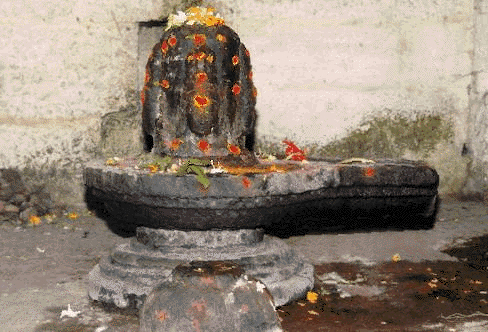
Brahma Lingam
Arunachala Temple, Tamil Nadu
Aug 17, CANADA (SUN) — A serial exploration of places of Lord Brahma's worship.
Brahmalingeswara Shrines
In the study of temples and shrines dedicated to the worship of Lord Brahma, there is much confusion as to which Brahma lingams are properly placed in the category of Shiva shrines, as opposed to Brahma shrines. Lord Brahma is known to have worshipped Lord Shiva on many occasions, and we find many examples of lingam forms with Lord Brahma's face, or catur-mukha faces, which memorialize these pastimes. These linga may be worshipped as either Brahma or Shiva shrines, or both, depending on the sentiments of the devotee taking darshan of them.
Linga is derived from the Sanskrit root 'lika', which means to sculpt or paint, and 'linga', which means one who sculpts or paints. Sri Krsna is known as Linga, because He has created (sculpted) the manifest world. One derivation of the word lingam is 'llng', meaning involution, and 'gam', meaning evolution. So 'lingam' describes the principle of involution and evolution combined, i.e., the primordial cause.
The use of 'linga' to describe the male generative organ is apparently not found in Sanskrit, but is said to have emerged from the Tamil language. There is an etymological rule in Tamil which is a form of decorum used to describe objects which one would not normally mention outright. In Tamil, the male genital organ came to be referred to as 'lingam'.
In the context of Shiva worship, the lingam is described at length in the Shiva Agamas and several Puranas, and to a lesser extent in the Vedas themselves. The linga is described as a form of embodiment for various aspects of the Trimurti, as well as the Vyashti forms of Pranava, the seed of the 96 elementary principles known as the Tattvas.
In the Puranas, the Shiva Linga is also explained in the context of pastimes between Brahma and Vishnu, and their various rasas. Lord Paramesvara appeared in the form of a flame whose beginning or end Brahma and Visnu were unable to discover, and in this way Paramesvara settled their disputes. This effulgent flame is called Linga, and it represents the sacred fire of the Vedic Yajnas. So just as the lingam form is not specific to Lord Shiva alone, the form is likewise not to be understood as some gross form of bodily organ.
Quite a number of Brahma-linga temples and shrines are found, most in the states of Karnataka Andhra Pradesh. In A.P. we find examples in Chebrolu, Narsipatnam, and Vizagapatam. There are several more in the area of Udupi, Karnataka, and these include the Brahmalingeswara shrines in Kundapura, Udiyavara, Ninjur, Kokkarne, Brahamavar, Kanajari, and Kedinje.
Over the next few segments we will explore these example of Brahmadev murtis, in the form of Brahma-lingams as well as Brahma-stambhas. We begin in the state of Karnataka.
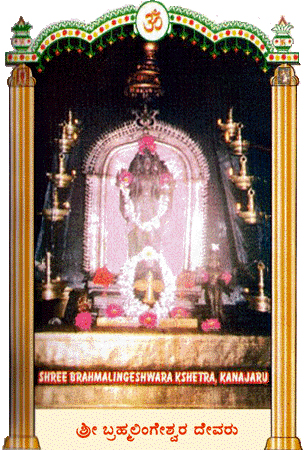
Sri Brahma-lingam
Kanajaru Brahmalingeshwara Kshetra
Sri Brahmalingeshwara Kshetra in Kanajaru
In the village of Kanajar, located deep in the interior coastal forests of Udupi district in Karnataka, is located the Sri Brahmalingeshwara Temple. Located on the Bailoor-Moodubelle-Udupi road, the temple is located 3 kms. from Bailoor.
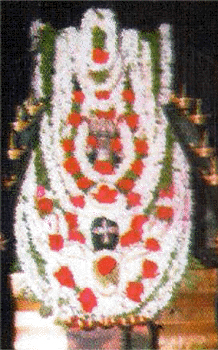
Sri Brahma-lingam
Kanajaru Brahmalingeshwara Kshetra
The Brahmalingeshwara Temple is joined by a Mahalingeshwara temple here, although very little information is available about either of them. A strong Christian influence is also found here, in the form of the Lourdes Church, which serves a large Catholic denomination in the village.
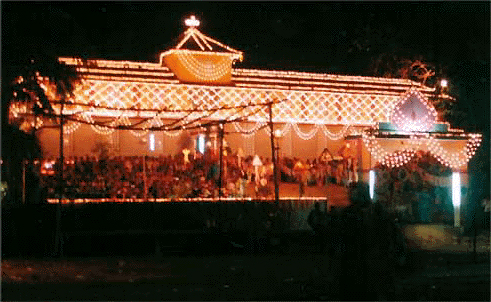
Sri Brahmalingeshwara Temple, Kanajaru
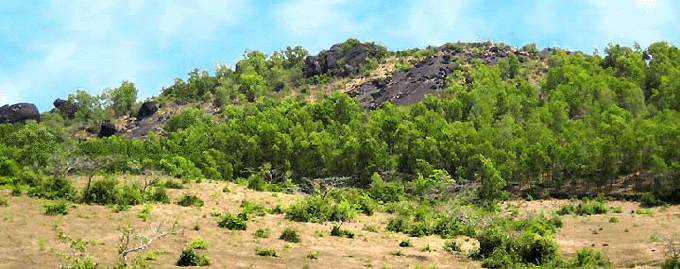
Hadankoli Gunja, a prominent Kanajar landmark

The Sun
News
Editorials
Features
Sun Blogs
Classifieds
Events
Recipes
PodCasts
About
Submit an Article
Contact Us
Advertise
HareKrsna.com
Copyright 2005, HareKrsna.com. All rights reserved.
